In this Article:
What Is Dolby Atmos Music?
Dolby Atmos – the leading immersive surround sound format – debuted in movie theaters back in 2012 with Disney/Pixar’s “Brave.” Atmos was the first object-based sound format to include height speakers in the mix so the sound comes from not just all around, but above you as well. It didn’t take long before the format made it to the home in A/V receivers, A/V processors and speakers. And not long after that, Dolby Atmos processing started appearing in sound bars as well.
As the content library grew, the format also found purchase in the most popular video streaming services such as Netflix, VUDU, HBO Max, Disney+, Amazon Prime and Apple TV+. Now you can find Dolby Atmos sound in thousands of movies and TV shows so you can enjoy that 3D immersive surround sound experience at home.
More recently, Dolby Atmos has found favor in the music industry. You can hear Dolby Atmos music mixes today not just on big budget new releases from major artists but also in back catalog releases, even as far back as albums from the 1940s and 1950s. Artists, producers and recording engineers are going back to original master tapes and remixing recent and classic studio recordings to take advantage of the new multidimensional capabilities of the format. Dolby Atmos can breathe new life into old recordings, making your favorite tunes even more enjoyable.
Is This Just Another Scam to Make Me Buy the Beatles’ White Album Again?
Some think immersive music is just the latest fad, designed to sell more records and more gear or to enrich Dolby’s license revenue coffers. “I tried that Quadrophonic Sound back in 1974, and I didn’t like it. Now get off my lawn!” And while those are clearly valid points, there does seem to be a significant amount of consumer interest in immersive sound for music today, and a great deal of artist and label support behind it.

As a point of reference, one intrepid soul (former Microsoft executive Robert Scoble) has been compiling Dolby Atmos playlists on Amazon Music and Apple Music. One of his lists is a comprehensive playlist of all Dolby Atmos encoded tracks on Apple Music: as of October 2022, it included over 60,000 tracks. That’s a lot of material, across a wide selection of genres. My preferred platform for music streaming is TIDAL and I’ve compiled my own list of favorite songs in Dolby Atmos on that service. Check out my Tidal Dolby Atmos favorites playlist. Although my playlist includes a couple of hundred songs, TIDAL now offers thousands of music tracks encoded in Dolby Atmos.
So yeah, this is clearly a thing. And while you can get a hint of that immersive effect from headphones (to a certain extent), you’ll enjoy it much more through speakers and we’re here to tell you how to get there.
Here’s What You’re Gonna Need:
While you can get Dolby Atmos music titles on Blu-ray Discs (which are compatible with any Blu-ray Disc Player) – and the quality of these lossless immersive audio tracks is exceptionally good – the selection is rather limited. To get full access to thousands of music tracks encoded in Dolby Atmos, you’ll probably want to do it via streaming.
So, to take advantage of this new wave of multi-dimensional music at home you’ll need three things:
- A music streaming service (and subscription) that supports Dolby Atmos
- A playback device that supports Dolby Atmos in your chosen music service – this could be a phone or tablet, a TV or a streaming stick or streaming box
- A receiver and speakers or a soundbar that supports Dolby Atmos
Streaming Services that Support Dolby Atmos
As of November, 2024, three major music streaming services support Dolby Atmos: Apple Music, TIDAL and Amazon Music. Apple Music supports Dolby Atmos immersive sound in its basic tier, which is currently $10.99/month for an individual subscription. TIDAL previously required its more expensive Hifi Plus tier for Dolby Atmos, but in April, 2024, it rolled the features of that tier into the lower price standard tier ($10.99/month). Amazon Music requires the “Unlimited” tier which costs $9.99/month (or $89/year) for Amazon Prime members or $10.99/month for customers who don’t have Prime.
All of the services currently include thousands of tracks in Dolby Atmos, but they vary significantly in how easy or hard it is to play back these songs through home speaker systems. Some services play nicely with third party gear, and some definitely do not.
Dolby Atmos Music on Amazon Music
If you want to play back songs in Dolby Atmos from Amazon Music using a powered speaker or soundbar, you can use the Amazon Echo Studio speaker (which is a one-piece speaker that bounces sound in all directions to simulate Dolby Atmos) or you can use a compatible SONOS speaker. For Sonos choices, currently the Sonos ARC, Arc XL, Arc Ultra, Beam (Gen 2) sound bars and the Sonos ERA 300 one-piece immersive sound speaker support Dolby Atmos music tracks from Amazon Music Unlimited.
Amazon also recently added support for Dolby Atmos in the Amazon Music app on FireTV Sticks. We’ve tested the FireTV Stick 4K and FireTV Stick 4K Max and found that both devices now allow you to play Dolby Atmos tracks in Amazon Music when the FireTV device is connected to a compatible receiver or soundbar that decodes Dolby Atmos via an HDMI cable. You’ll need to make sure you have enabled both “Spatial Audio” and “Ultra HD” sound options in the Amazon Music app.


We hope that the Amazon Music app for Android TV and for Apple TV will be updated to support Dolby Atmos on streaming devices like the Apple TV 4K or NVidia Shield, but as of May, 2024, we’re not there yet.
Dolby Atmos Immersive Sound on Apple Music
Apple Music’s Dolby Atmos titles are included as part of the larger “spatial audio” umbrella. If you have a Dolby Atmos capable receiver or soundbar, you can use the Apple TV 4K streaming box to stream Apple Music in Dolby Atmos format. All versions of the Apple TV 4K box (2021, 2022 and 2023) support Dolby Atmos from multiple video streaming sources: Apple TV+, Netflix, HBO Max and Amazon Prime Video (to name a few). They also support Dolby Atmos music from both Apple Music and from TIDAL. We’ve tested this in-house and can confirm.
One drawback to listening to Dolby Atmos on an Apple TV box is that the first second or two of the song is clipped when listening to Dolby Atmos music tracks. We have confirmed that this is not a problem with the receiver or amplifier being used – it is specific to Apple TV’s hardware. And as of the most recent update, this issue still has not been corrected. When we contacted Apple support about the issue, their suggestions was to try a different HDMI cable. This had no effect. We hope the company is able to fix this in a software update or an upcoming version of the hardware.


The setting to enable Dolby Atmos output is set automatically on the Apple TV 4K box based on its HDMI handshake with your TV or receiver. When I connected the box to my Denon AVR-S760H and also to a Denon AVR-X3800 receiver via HDMI cable, I got the Dolby Atmos logo immediately when listening to Dolby Atmos tracks on Apple Music or in TIDAL. So the Apple TV is currently a good streaming box to buy if you’re interested in playing back Dolby Atmos music tracks over your home speaker system from both Apple Music and TIDAL.
The only drawback is the one we mentioned earlier: Dolby Atmos music tracks played back on an Apple TV box from any music service clip the first second or two of the song. This problem is specific to the Apple TV hardware and not to the music streaming service as the same service (TIDAL) plays Dolby Atmos music tracks without clipping the intro from a FireTV stick fed to the exact same A/V receiver.

Sonos Adds Apple Music Dolby Atmos Support
In March, 2023 Sonos added support for Dolby Atmos tracks in Apple Music so now you can listen to Dolby Atmos immersive audio tracks from Apple Music on the Sonos ARC, ARC Ultra, Sonos Beam, Gen 2 and the Sonos ERA 300 one-piece Dolby Atmos speaker. Just access your music from the Apple Music app in Sonos and select Dolby Atmos tracks in order to listen in Dolby Atmos on compatible Sonos speakers.
LG Adds Apple Music Dolby Atmos Support
In May, 2024, LG became the first TV maker to include Apple Music with Dolby Atmos spatial audio in its native WebOS Apple Music app. If you own any LG OLED TV made since 2018 or select LG QNED TVs, you can now install the Apple Music app on your LG TV and enjoy Dolby Atmos immersive music tracks from your TV speakers (yuck) or from a connected Dolby Atmos sound bar (better) or A/V receiver and speakers (even better).
As part of the launch, LG is offering a free 3-month trial of Apple Music to eligible TV owners. Install the Apple Music app on your LG TV to see if you’re eligible for the trial. If you’re already an Apple Music subscriber, just install the Apple Music app on your LG TV, log in and start enjoying that Dolby Atmos music. Keep in mind that the basic individual Apple Music subscription only allows the use of Apple Music on one device at a time. So you might need to close Apple Music on your iPhone before listening on your TV.
Dolby Atmos Immersive Music in TIDAL
TIDAL currently offers the most options for Dolby Atmos playback to home speakers. TIDAL prides itself on being the “audiophile-friendly” music streaming service. So in addition to Dolby Atmos, TIDAL also supports high resolution audio formats for true master tape quality music playback.
TIDAL supports Dolby Atmos output in two ways: the native TIDAL app available on many streaming devices and platforms and TIDAL Connect.
TIDAL has native apps for the Android TV, WebOS (LG TVs), Apple TV, Google TV, Tizen (Samsung TVs) and Amazon Fire TV platforms. All of these platforms support Dolby Atmos output from TIDAL on compatible devices. Not all devices on each platform support Dolby Atmos but we can confirm a few that do.

For Android TV we can confirm that the NVidia Shield can output Dolby Atmos on TIDAL. The TIDAL App on Amazon FireTV supports Dolby Atmos on the company’s FireTV Stick 4K, FireTV Stick 4K Max, FireTV Stick Gen 3, and FireTV Cube. If you’ve got an AppleTV 4K box, you can use the TIDAL app on that device to pass Dolby Atmos to a compatible soundbar or receiver and speakers using an HDMI cable. And if you have an LG Smart TV made in or after 2018, the TIDAL App on those TVs supports Dolby Atmos output. As of May 2024, Dolby Atmos content from TIDAL is not yet supported on any Roku stick, Roku streaming box or Roku TV.

Whichever device you use to play back TIDAL in Dolby Atmos, you may need to enable Dolby Atmos in the setup menu. Check the audio settings in your particular source device to make sure Dolby Atmos is enabled and that both HDMI CEC and HDMI ARC are both enabled (where necessary). This is normally only required if you are connecting your TV to a soundbar or receiver using HDMI ARC (Audio Return Channel) or eARC (enhanced Audio Return Channel).
TIDAL Connect is a little different. It’s a way to link the TIDAL app on your phone or tablet directly to an amplifier, streaming device or powered speakers. TIDAL Connect supports high end components from companies such as NAD, Bluesound, Lyngdorf and others. With TIDAL Connect, you use the TIDAL app on your phone to select music tracks, but then the music itself is delivered directly to that device from the TIDAL servers in the cloud. The music stream does not have to pass through your phone on the way down. Your phone is basically just the “remote control” which selects which TIDAL tracks or playlists are sent directly to the playback device. In some cases, the DTS “PlayFi” app is actually used to deliver the TIDAL content to the playback device. And yes, DTS PlayFi can deliver content in Dolby Atmos format (cats and dogs living together… it’s a strange, strange world).
For the curious, TIDAL maintains a page with details about device compatibility. Use the filters to see which devices are supported for Dolby Atmos playback, for TIDAL Connect or for both.
In my testing, Tidal Connect does support Dolby Atmos on select devices, including the 2024 model year LG Soundbars like the S95TR Dolby Atmos Soundbar I reviewed this year. It also works on the Denon AVR-X3800H receiver. But check the specs on your gear because many devices that support TIDAL Connect only support 2-channel audio (stereo) from TIDAL.
Where the Magic Happens: The Speakers
After you’ve selected your music streaming service, and confirmed that your source device supports TIDAL’s Dolby Atmos output, then you’ll need speakers to play back that sweet multi-channel music. The main options here are a powered soundbar or a component surround sound system comprised of a receiver and speakers or a preamp, amp and speakers.
For best results, we recommend going with a discrete speaker system that has at least 5.1.2 channels: five speakers at or near ear level for traditional surround sound, one or more powered subwoofers for low bass reproduction and two or more height channels. Some speakers and soundbars actually include the three front speakers (front left, center and front right) as well as up-firing Dolby Atmos height speakers in a single cabinet that sits below your TV. This can make things much simpler as far as set-up goes. Then you only need to add rear speakers and a powered subwoofer to complete the system. We do not recommend “virtual” soundbars that simulate all of the surround sound channels in a single small bar as these won’t give you the full immersive effect of Dolby Atmos.
Whichever speaker system or receiver you choose to use for Dolby Atmos absolutely requires an HDMI input. You can’t pass Dolby Atmos over a fiber optic cable or a regular stereo analog audio cable. Use the apps built into your TV or plug in a compatible streaming box like the Apple TV, FireTV Stick or NVidia Shield to one of your TV’s HDMI ports and attach the HDMI port labeled ARC or eARC on the TV into the corresponding HDMI port on your sound bar or receiver.
Again, be sure that the TV’s HDMI-CEC or HDMI Control functions are turned on in the TV’s settings menu and that HDMI ARC or eARC sound output is enabled in the TV’s audio settings menu. This is not always automatic.
Soundbar Options for Dolby Atmos Music
There are quite a few soundbars on the market that support Dolby Atmos. Again, look for one that has a real (discrete) 5.1.2 channel configuration at a minimum. 5.1.4, 7.1.2 and 7.1.4 would be even better choices. One popular soundbar for Dolby Atmos is the Sonos ARC. It has upward-firing speakers built into the bar to handle those height channels for Dolby Atmos. For a 5.1.2-channel system using the Sonos ARC, you’ll need to add a Sonos Subwoofer and a pair of Sonos One SL speakers for the rear channels. For a 7.1.4 Sonos system, you can use a pair of ERA 300 speakers (with up-firing drivers) as the rear channel speakers.
Note: Sonos refers to the ARC/ERA 300 system as “7.1.4 channel” because the ARC soundbar has both upward-firing and side-firing drivers for the front height and side surround channels and the ERA 300 speakers have both front-facing and top-facing drivers. Reflective speakers can work well in rooms with right angles and smooth reflective walls and ceilings. But if you have high ceilings or an irregular room shape, you will get better results from ceiling mounted speaker systems. Other Dolby Atmos capable sound bars are available from Samsung, Sony, VIZIO and others.

One benefit that the Sonos ARC and ARC Ultra currently have over any other sound bar optionis that they and their smaller cheaper little brother the Sonos Beam Gen 2 are the only soundbars that currently include built-in support Dolby Atmos Music from Amazon Music. But the Sonos Beam lacks upward-firing speakers, so we don’t recommend it for Dolby Atmos music. Combine the Sonos ARC or ARC Ultra with an Apple TV 4K streaming box plugged into your TV or with an LG TV with Apple Music built-in and you can enjoy Dolby Atmos music from Amazon Music, Apple Music and TIDAL, all through the same soundbar system. That’s a lot of choices for immersive music.
Check out our Current Recommendations for the Best Sounding Dolby Atmos Soundbars You Can Buy Today
Crank Your Dolby Atmos Music to Eleven with a Receiver and Speakers
While a soundbar-based system can get the job done for Dolby Atmos, a receiver and separate speakers can provide higher performance and greater flexibility, sometimes for less money. An Audio/Video Receiver (AVR) offers more inputs, more speaker configuration options and more upgradeability than a soundbar. Also, if you’re a fan of vinyl records, many receivers have phono inputs which allow them to work with any turntable. They also have built-in tuners in case you want to listen to local radio stations (anyone remember those?). You don’t normally have these options with a soundbar.

Dolby Atmos-capable receivers are available from companies such as Denon, Marantz, Onkyo, Integra, Pioneer, Yamaha and Sony (among others). Starting prices for Dolby Atmos compatible receivers start at about $500. Just like with soundbars look for a receiver that supports at least 5.1.2 channels: five surround speakers, one powered subwoofer and two height channels. This speaker configuration can give you a fully immersive surround soundstage in small to medium-sized rooms. A Dolby Atmos receiver that supports 5.1.2 surround will frequently be labeled as “7.1” or “7.2” – this means it has seven on-board amplifiers, plus one or two subwoofer outputs.
Check Out Out Current Recommendation for a Budget Dolby Atmos Receiver and Speakers for Under $1,000
If you’re planning to use the system in a larger room, or just want to get even more immersive surround, then consider going with a 5.1.4, or even 7.1.4 channel system. Yes, it really can go to 11: eleven speakers plus a subwoofer. OK, that’s actually twelve. Which is even better than eleven. Because it’s more.

As far as which speakers to buy, you can either buy a packaged 5.1.2 or 5.1.4 channel system that comes with all the speakers you need (just add wire) or you can build a component system by mixing and matching different speakers together. We always recommend staying with a single brand of speakers for your entire system. More specifically, stay within a particular line within that brand. You want to make sure the drivers and voicing of all speakers is similar throughout your system.
This is to maintain the same tonal balance all over your room. Otherwise, a motorcycle traveling around your room may transform from a Harley to a Honda to a Vespa scooter as it moves from side to center to the back of your room, through your various speakers. And no one wants that. Tonal consistency is even more important with music as you want the instruments to maintain their characteristic sound when they appear in or move to different areas of the room.
Things are Looking Up!
For Dolby Atmos immersive sound to work well, you do need sound to come from above, but this doesn’t necessarily mean you need to install physical speakers in your ceiling. As with soundbars, there are several speaker options which use up-firing drivers to bounce sound off the ceiling so the sound comes from above your head. For these so-called “elevation modules” or Dolby Atmos-enabled speakers to work, it’s best to have a flat reflective ceiling that isn’t too high. Sound reflects well off painted sheetrock or similar smooth construction, but not as well off textured or “popcorn” type ceilings.

Ceilings up to about 12 feet in height can work well with reflective speakers. If you’ve got vaulted ceilings, very high ceilings or textured ceilings then you’ll be better off with in-ceiling or on-ceiling speakers. If your ceilings are really high, then consider height speakers mounted on brackets high on the front, side and/or rear walls aimed down toward the listeners or even artistically designed pendant speakers that hang down from above.
Dolby Atmos 5.1.2 speaker packages are available from companies such as Klipsch, Polk, Monoprice, Focal, Monitor Audio and others. These bundles typically include upward-firing height modules which are either built into the front left and right speakers or come as separate small add-on speakers that sit on top of your front left and right speakers. 5.1.4-channel bundles are similar, with upward-firing height channels on both the front and rear speakers. If you want to do a 5.1.4 setup, make sure your receiver supports it. It will need to have nine built in amplifier channels in order to support a 5.1.4 channel Dolby Atmos configuration.
Upgrade Your Existing Rig
If you already own a 5.1 or 7.1 channel speaker set-up and want to add height channels, you can either do that with Dolby Atmos enabled height modules or with in-ceiling speakers. Again, if possible, use height speakers from the same brand, preferably using the same types of drivers, for sonic consistency. Also, before buying new speakers, make sure your existing receiver supports Dolby Atmos, with at least 7 amplifier channels. Or just buy a new receiver that does. After all, it’s only money. You can’t take it with you. Unless you get a really large coffin… and a really long extension cord.
Sit Back, Relax and Enjoy the Magical Multi-Channel Musical Experience
Once you’ve got everything connected, get into your music streaming app and do a search for “Dolby Atmos.” You should find a number of artists, albums and playlists from which to choose. Hit play, look for that Dolby Atmos logo to appear, and rediscover your favorite music all over again.

Have you discovered a new or different way of playing Dolby Atmos music on home speakers? Let us know in the comments.
MAJOR UPDATES:
- March, 2023: Sonos added support for Dolby Atmos from Amazon Music
- October, 2023: Amazon FireTV 4K Max added support for Dolby Atmos in Amazon Music app
- May, 2024: LG TVs added Apple Music app with Dolby Atmos support
Related:
- Install In-Ceiling Speakers for Dolby Atmos Like a Pro
- Dolby Atmos Music May Be Coming Soon to Tesla Cars in a Software Update
- Now You Can Get Dolby Atmos Music in Your Car, as Long as Your Car is a Top of the Line Mercedes or Maybach
- Yes You CAN Get a Dolby Atmos Surround Sound System for Under $1,000
- Four Great Sounding Dolby Atmos Soundbars You Can Buy Today
- LG OLED and QNED TVs Get Apple Music app with Dolby Atmos Immersive Sound























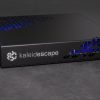
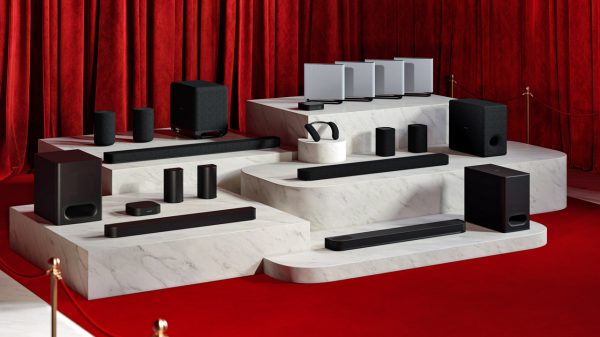

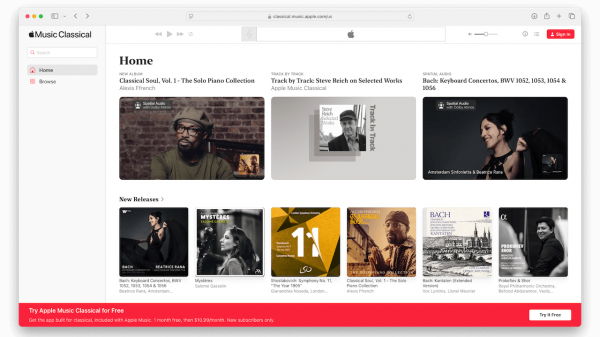
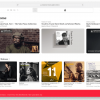

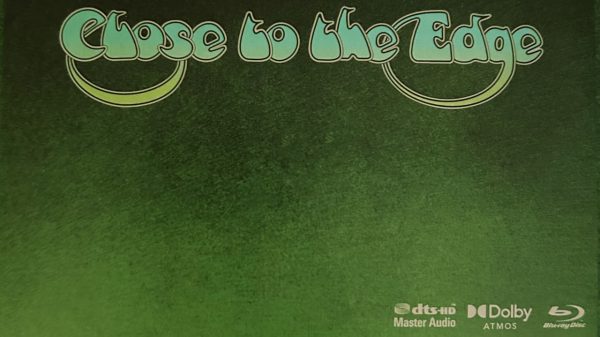















Dan K
December 20, 2022 at 1:36 pm
Just curious if I am reading this correctly. On a FireTV stick ( an Amazon product) I can not listen to Atmos music with Amazon Music Unlimited but I can with Tidal? Really? Why would Amazon allow Tidal to have this feature but not their own service?
Chris Boylan
January 8, 2023 at 10:37 pm
UPDATE: In late 2023, Amazon added Dolby Atmos support to the Amazon Music app on FireTV. The article has been updated to reflect this.
Original reply follows:
You are correct. As of the publication date of the article and even now in January, 2023 Amazon Music with Dolby Atmos is currently only supported on the Sonos ARC (real Dolby Atmos 5.1.2) and Sonos Beam (virtual Dolby Atmos) and on the Amazon Echo Studio, which is a single piece speaker that bounces sound in multiple directions in an attempt to create an immersive soundstage. Dolby Atmos is not yet supported on the Amazon Music app on any platform (other than Sonos).
I’ve even tested it on the Amazon Fire Stick 4K Max (Amazon’s most advanced streamer) and that device also cannot pass Dolby Atmos to a receiver from the Amazon Music app. But The Fire Stick 4K Max works great with Dolby Atmos Music on TIDAL.
As to why this is the case, I’ve never really gotten a good answer out of Amazon. The strange thing is that the Amazon streaming devices support Dolby Atmos from most or all of the video streaming apps, like Netflix, HBO Max, Disney+ and even Amazon Prime Video. So lacking that support in Amazon Music is definitely strange.
Amazon Music does support Dolby Atmos on headphones on compatible Android and Apple phones, but I personally am not impressed with the way Dolby Atmos sounds on headphones yet.
If I learn of a fix for this in the future, either with new hardware or a software update, I’ll be sure to update this article.
terry
April 15, 2023 at 8:20 pm
I am on the path of setting up a 5.1.4/7.1.2 system for movies and music. I do not know on much this site is read but here are some quick comment I put on roku blog after tring there latest roku ultra with supposedly full atmos. The comments are direct. Anyone who comments on atmos should have some real test files that can be interpretd with out question. Like how many channels does tidal atmos use.
Atmos scam
I discovered this also. The new roku if not put in bypass will generate a dolby atmos signal on everything. They have joined the atmos scam. Out of the box with default setting I was watching “The Rifleman” on a ota channel in b/w thru my ota/tablo/roku/onyko path with my atmos capable AVR reporting dolby atmos. They want to sell atmos sound bars and hope no one notices. They will put anything even mono in an atmos shell.
If your are tring to setup atmos system, make sure you have the quality dolby atmos demo files and buy at least one real dolby true hd atmos file of music to play. I bought the new roku hoping to help decide if I was getting real atmos…
Observations on the way to find quality atmos music for my new 5.1.4/7.1.2 system.
Both apple spaitial and Amazon atmos are 2 channel only. The headphone 3d music scam. Not commenting on playback hifi quality
I am on fence about tidal.
Amazon neuters atmos capable movies and only outputs 5.1. The new Avatar film can be bought on Amazon and Vudu for same price 19.99. Vudu is in atmos, Amazon in 5.1
As for playing tidal atmos thru a real atmos surround system, stay tuned.
To use any android tv including nvidia shield, you need google account just to do factory reset. Sent mine back on the spot. Generally reported work around, just get fake account…
Fire tv, friend says bug shuts playing down after 25 min. Have not evaluated formats yet.
Roku has decided to fake it..
Apple next maybe..
Jon Johnson
September 13, 2023 at 8:04 pm
Thank you for all the great info and reviews. Top quality reading. If you have any comments or advice with my scenario(s) below I would be grateful.
My main question ultimately is using my iPad with an hdmi adapter connected to an AV Dolby Atmos supported receiver, will I get real Atmos or will it know that it’s Atmos? Below is some context of what I’m doing.
Using an iPad with Apple Music with Dolby Atmos always on I currently have it running two ways exploring it with gear I currently have. Running from the iPad’s headphone jack into my Sony DH190 2 ch.stereo. receiver, I can hear aspects of Atmos and can tell the difference between when it’s Atmos and not. Kinda cool but not quite. Alternatively I discovered that using an 8 year old hd tv with my iPad connected with an hdmi adapter and then using the tv’s built in coaxial out to a DAC using the DAC’s rca stereo out to the Sony I can still hear the difference but nothing outstanding. Additionally Atmos doesn’t transfer out through coaxial? Correct? At best 5.1 if that?
In any case my theory is I’m getting Atmos the way it’s intended through headphones at least? I also have a couple of fire tv’s that support ARC and eARC and the DAC I mentioned has one hdmi input that works with the fire tv’s hdmi connections but not with the iPad connected directly to the DAC through hdmi. I was wondering if I’d get better results with that?I haven’t had time to explore it other than a few minutes with each tv when available and they sound more “Atmosy”.
Chris Boylan
November 23, 2024 at 4:50 am
So we don’t get notifications about new comments. Sorry! So here’s my reply a year and two months later. 🙂 A laptop or tablet *may* be able to output Dolby Atmos over HDMI. Some can, some can’t. The good news is that most receivers will tell you what kind of signal they’re receiving, either right on the front display panel or by hitting an “info” button which is normally a small “i” on the remote. So if you bring up the AppleTV or iTunes or Netflix app, put on some Dolby Atmos content (movie or music), and plug the HDMI cable from the iPad into the receiver, you should get some indication on the receiver whether it’s receiver Dolby Atmos, Dolby Digital or PCM.
You can’t pass Dolby Atmos over coax or fiberoptic or analog multi-channel outputs. Only HDMI.
You *can* listen to Dolby Atmos MUSIC content from iTunes from most iPads and iPhones over most standard headphones using a standard headphone jack. In this case, iTunes delivers a “binauralized” (2-channel) version of the Dolby Atmos mix to your ears. This emulates multi-channel surround sound using psychoacoustics and HRTF processing. It’s simulated (not discrete) but it can be kind of effective on some headphones. To get an idea of what this can sound like, check out this DTS Headphone:X test track on YouTube. DTS:X is a competitor to Dolby Atmos.
https://www.youtube.com/watch?v=GkEpn_r-d0I
Although this is a “standard” 2-channel audio track, it has been binauralized using DTS Headphone:X processing. Most people report hearing a pretty accurate depiction of sounds coming from different points in space. Apple and other manufacturers do a similar type of binauralization to Dolby Atmos tracks to make movies and music sound more immersive through standard headphones. But immersive music really sounds better through a good set of speakers (and a lot of them). Hope that helps!